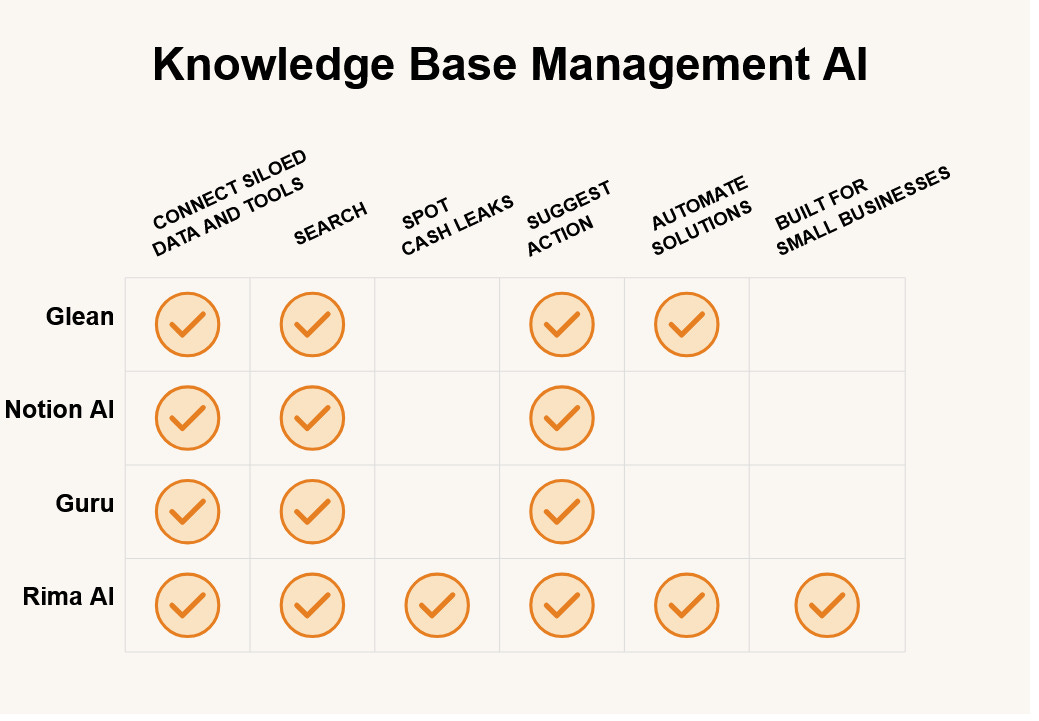Superhuman Business Owner
Seeing the Forest for the Trees
I first came to understand the real impact of working capital management about three years ago, while running Garage—a B2B auto parts marketplace moving hundreds of thousands of dollars in inventory every month. We operated lean, with 80% of our stock on consignment and 1–2 week payment terms from suppliers. That meant every day was a balancing act—tracking cash flow, managing inventory, and ensuring we could stock up when needed and pay suppliers on time. I had five different spreadsheets opened daily just to keep up. But I didn’t truly grasp the stakes until I made a costly mistake.
One afternoon, I was staring at our inventory report and realized we were sitting on $150K worth of slow-moving SKUs. In an effort to drive growth, we had stocked aggressively with minimal controls. Now our cash was locked up. When our payables came due, we found ourselves in a bind and had to heavily discount goods to free up cash. We took a loss.
In hindsight, I wasn’t short on data. I was just missing the full picture. I looked at inventory and payables, but failed to spot patterns in sales, customer routes, and reorder cycles. I was managing the trees but missing the forest.
Many small business owners today fall into the same trap I did, spending hours digging through spreadsheets, email threads, and disconnected reports just to answer basic questions about their business. That’s the trees: all the scattered data points pulling your attention in different directions. But what really drives smart decisions is the forest, the ability to see trends, spot issues early, and connect the dots across your entire operation
When You Can't See The Forest For The Trees
This visibility crisis affects virtually every small business owner. We get so caught up in day-to-day operations that our overall business health remains obscured. It's not that we're not looking; it's that our data is so fragmented we can't see the complete picture.
At Garage all of my systems didn’t talk to each other. I still had siloed data across functions. I spent hours with inventory data and payables, but missed critical connections to sales patterns and delivery routes. Some routes moved specific SKUs rapidly, but we didn't service those routes frequently enough—yet we kept overstocking those parts. The result was tied-up capital and avoidable cash flow strain.
Why Business Owners Struggle With Visibility
When you’re wearing multiple hats and running from one fire to the next, three major obstacles tend to get in your way:
Data Fragmentation
Critical data lives in separate places—accounting software, CRMs, inventory management tools, emails, google sheets and a graveyard of documents in the file room or sitting on some on premises server from the 80s. Without a unified system, your visibility is constantly compromised.No Single Source of Truth
When data lives in multiple places, which version do you trust? Teams end up second-guessing numbers, reconciling reports, and wasting time trying to confirm what’s actually accurate.Time Constraints
Even if you manage to bring all the data together, do you have the time to analyze it meaningfully? For most business owners, the answer is no. Between customers, vendors, and day-to-day firefighting, there’s little room left for deep analysis.
This leads to many business owners stuck in the trees without clear insights to make critical decisions. And when you can't see the forest, you’re more likely to miss the small leaks that eventually sink the company.
Knowledge Base Management To Help You See The Forest
Modern knowledge base management tools such as Glean and Rima act like a unified layer across all of your data and workspace tools. It eliminates the data fragmentation issue and provide business owners with a single source of truth to search and find the right answers quickly, eliminating hours spent fiddling across data and disparate tools just to find an answer to make a decision. These tools also allow you to see the forest – patterns and trends across your data – so you can spot issues and prevent cash leaks that ultimately sink the whole ship.
In the age of AI, these tools give every business owner super powers and businesses who do not use these tools will be at a severe disadvantage to those who do. These tools help turn your scattered operational documents into an intelligent unified knowledge base. This enables you to spend less time searching and more time growing.
In other words, for the first time, AI can help small business owners see both the forest and the trees.
How Do You Get Started
If your business is operating with disconnected systems (and let’s be honest, most are), don’t boil the ocean. Your first step isn’t to install a dozen new tools. It’s to find one AI solution that plugs into your existing data systems and tools and brings everything together.
Today’s knowledge base AI tools offer a range of options. Glean and Notion AI are great for search and information access across silos. Guru offers a streamlined experience for centralizing team knowledge and surfacing insights. And Rima AI, built specifically for small businesses, not only connects siloed tools but also helps spot cash leaks, suggest actions, and even automate fixes—all without needing a full ops team.
In the following week, we will discuss what to do once you have visibility and can make better sense of your operations instead of spending hours digging through paper trail.No major developments to report this week. We'll be back with fresh insights in our next update.
THIS WEEK ON MAINSTREET
📰Mainstreet Minute:
No major developments to report this week. We'll be back with fresh insights in our next update.
📌Quick Win Tip:
Docwelo is the fastest way to generate professional documents—without wrestling with templates or legal jargon. Designed for freelancers and small businesses, it lets you create contracts like NDAs, service agreements, and employment offers in minutes. Just answer a few smart prompts, and Docwelo’s AI delivers a perfectly formatted, legally sound document ready to go. With bank-grade security, real-time collaboration, and a pay-as-you-go option starting at $2 per document, it’s the no-brainer way to handle paperwork. Get a quick win this week by automating your next contract with Docwelo.




